Flower Garden Ideas Massachusetts: Unique and Beautiful Designs
Growing a flower garden in Massachusetts can be a rewarding experience due to the state’s diverse climate and soil types. From colorful butterflies fluttering to hummingbirds zipping around, your backyard can transform into a vibrant haven for both plants and wildlife.
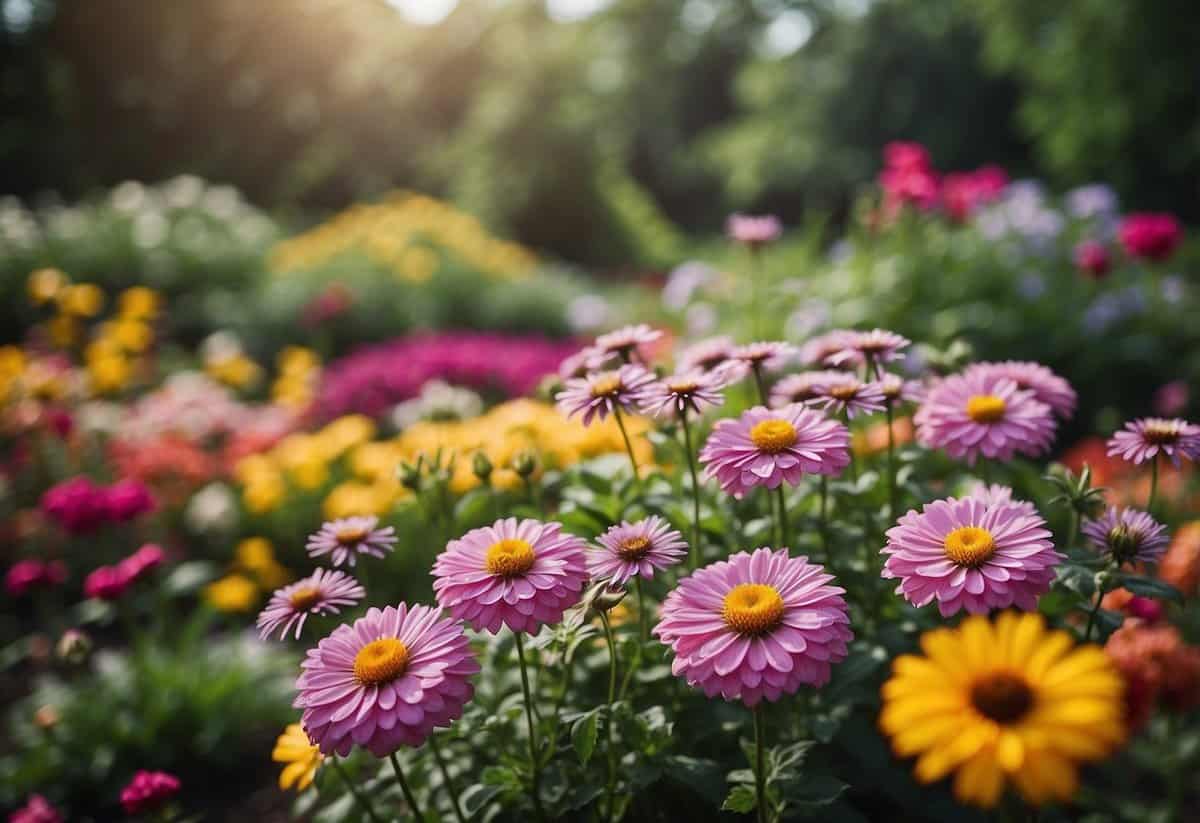
How can you create a stunning flower garden that thrives in the Bay State? With the right combination of native perennials and thoughtful design, you can cultivate a beautiful and resilient garden. Whether you have a spacious landscape or a small city plot, there’s a variety of flowers and garden ideas suited for your needs.
1) Hydrangea Clusters
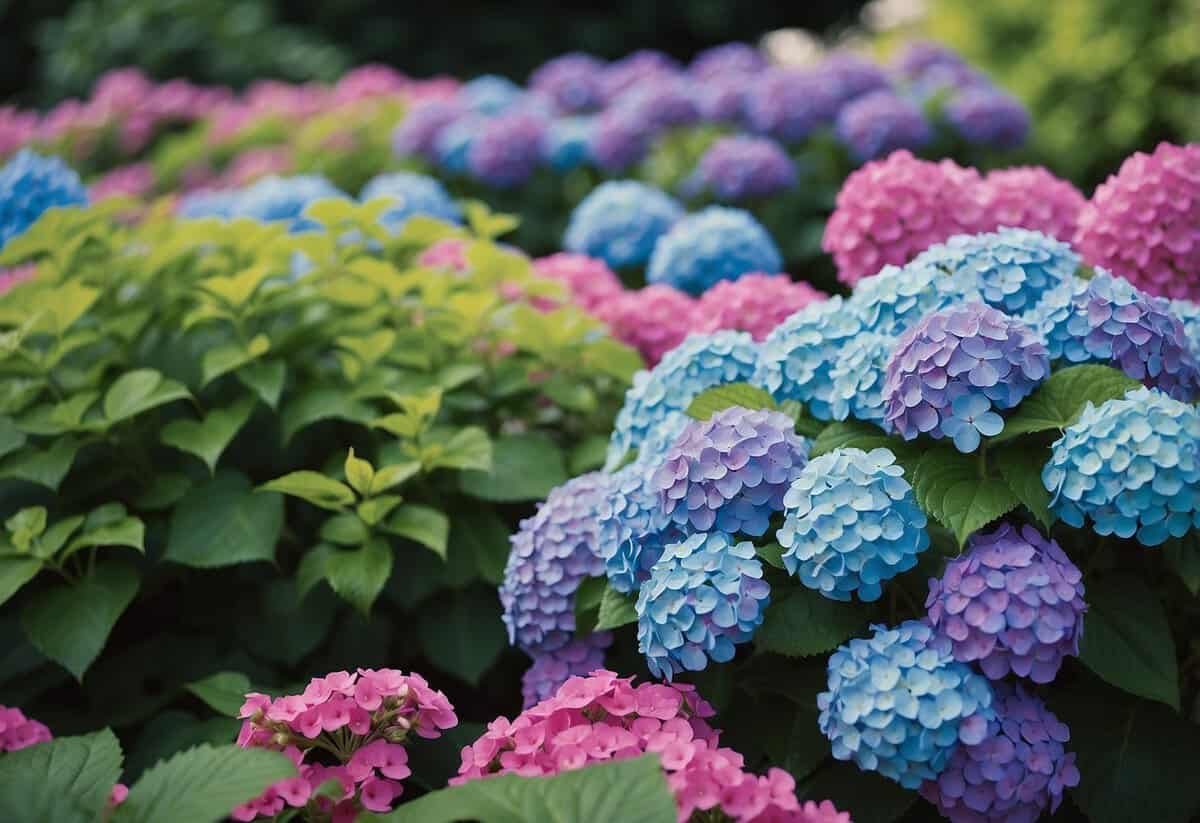
Hydrangeas are perfect for creating lovely clusters of blooms in your garden. These plants come in various colors, including blue, pink, purple, and white. They thrive in the Massachusetts climate, making them a great choice for your yard.
You can plant hydrangeas as borders, hedges, or standalone focal points. Their large, showy flowers add beauty and charm to any garden. For more ideas on using hydrangeas, check out these landscaping tips.
2) Butterfly Bush

Butterfly Bushes are a lovely addition to any flower garden in Massachusetts. They attract butterflies with their colorful blooms and sweet nectar.
There are different varieties to consider. The Lo & Behold® series offers compact options like ‘Blue Chip Jr.’ and ‘Pink Micro Chip’ that are great for small spaces.
For medium height options, the Miss series, such as ‘Miss Molly’, provides vibrant, eye-catching flowers. You can learn more about Butterfly Bush care to ensure your garden thrives.
3) Lilac Scented Pathways
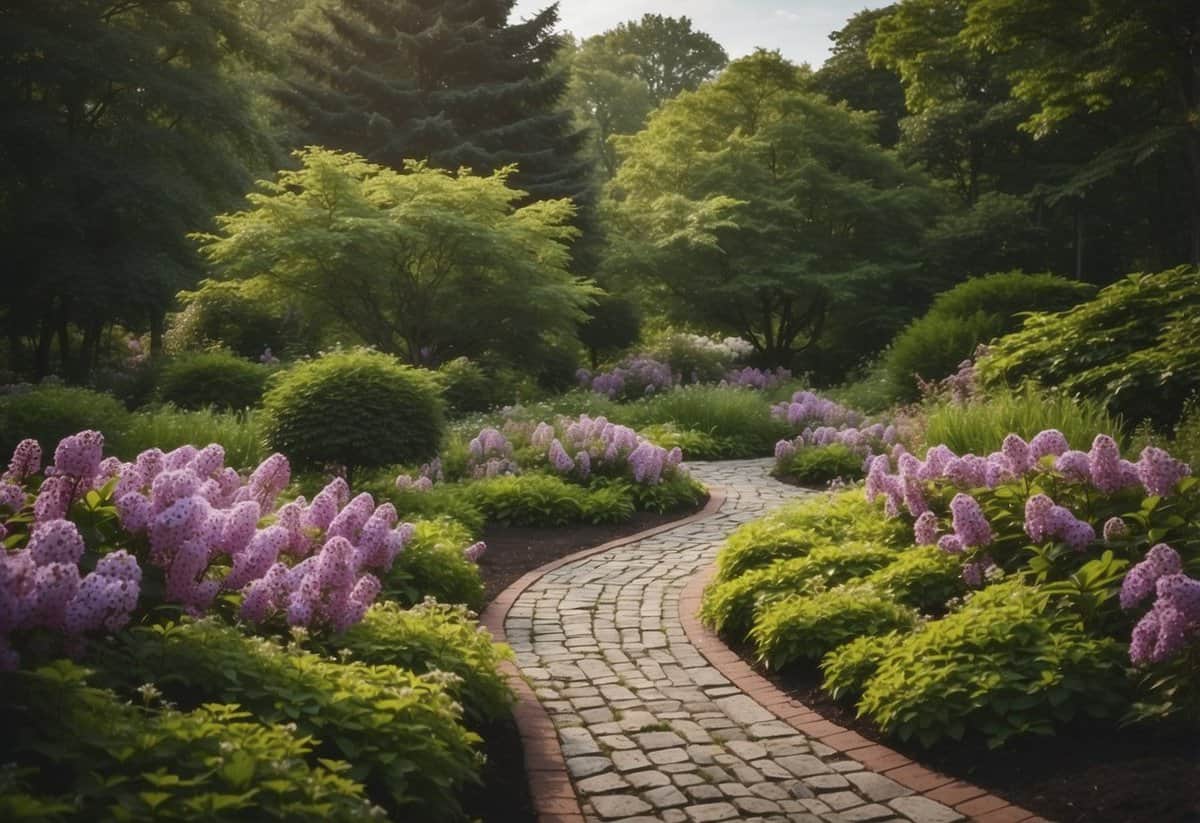
Imagine walking through a garden, surrounded by the sweet fragrance of lilacs. In Massachusetts, you can create this dreamy pathway by planting different varieties of lilacs.
Lilacs come in many colors like purple, pink, white, and even yellow. Visit Lilacland in Pelham to see some of the most beautiful and rare lilacs.
For your garden, consider adding the Japanese tree lilac, which grows taller and more beautiful each year. The Ivory Silk cultivar offers attractive white flowers in early June.
4) Heirloom Roses
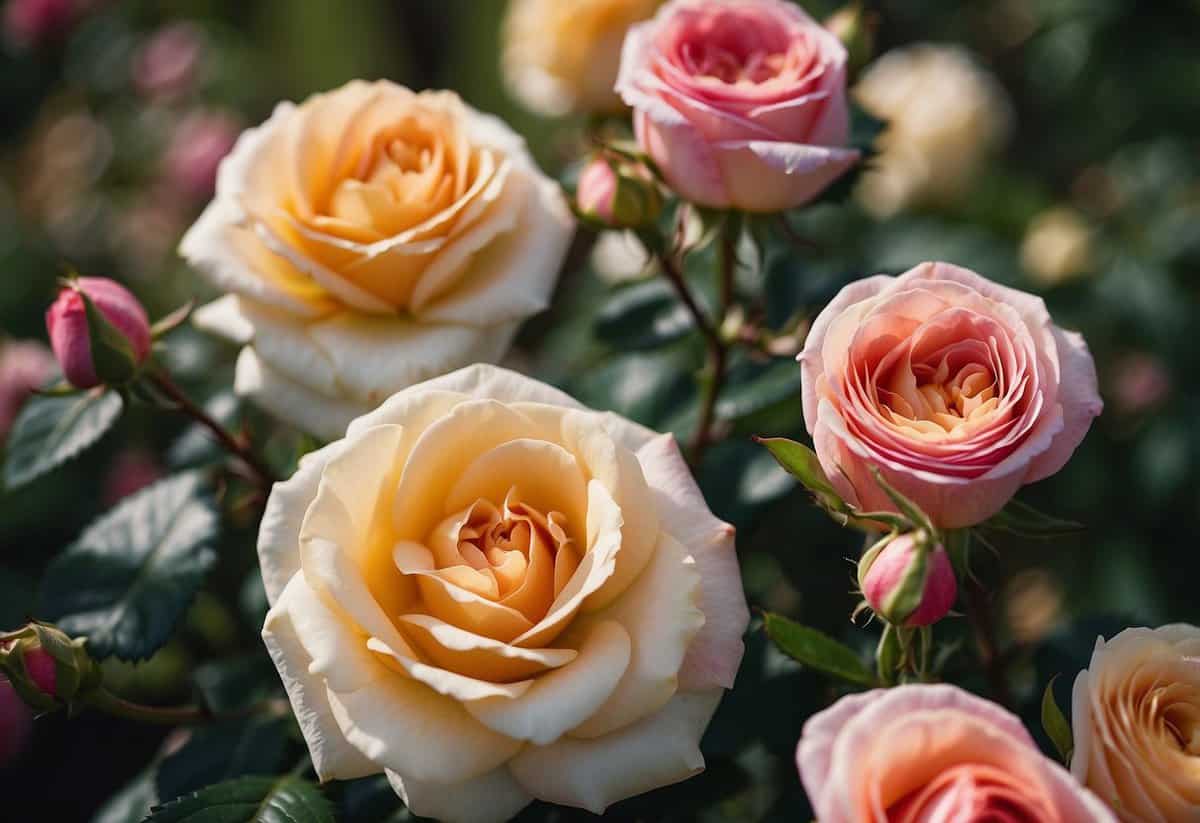
Heirloom roses add historical charm to your Massachusetts garden. These roses date back to before 1867 and come with lovely fragrances and unique blooms. They thrive in well-drained soil rich in organic matter.
Consider varieties like ‘Zephyrine Drouhin,’ which is known for its vibrant pink flowers and continuous blooming. Another great option is the Old Bourbon Rose, originating from Réunion in the 1800s.
To plant, amend your soil with compost or aged manure. Ensure a soil pH between 6.0 and 6.5 for best results. You can find more planting tips on Gardeningetc. Enjoy the timeless beauty of these classic blooms!
5) Wildflowers Mix
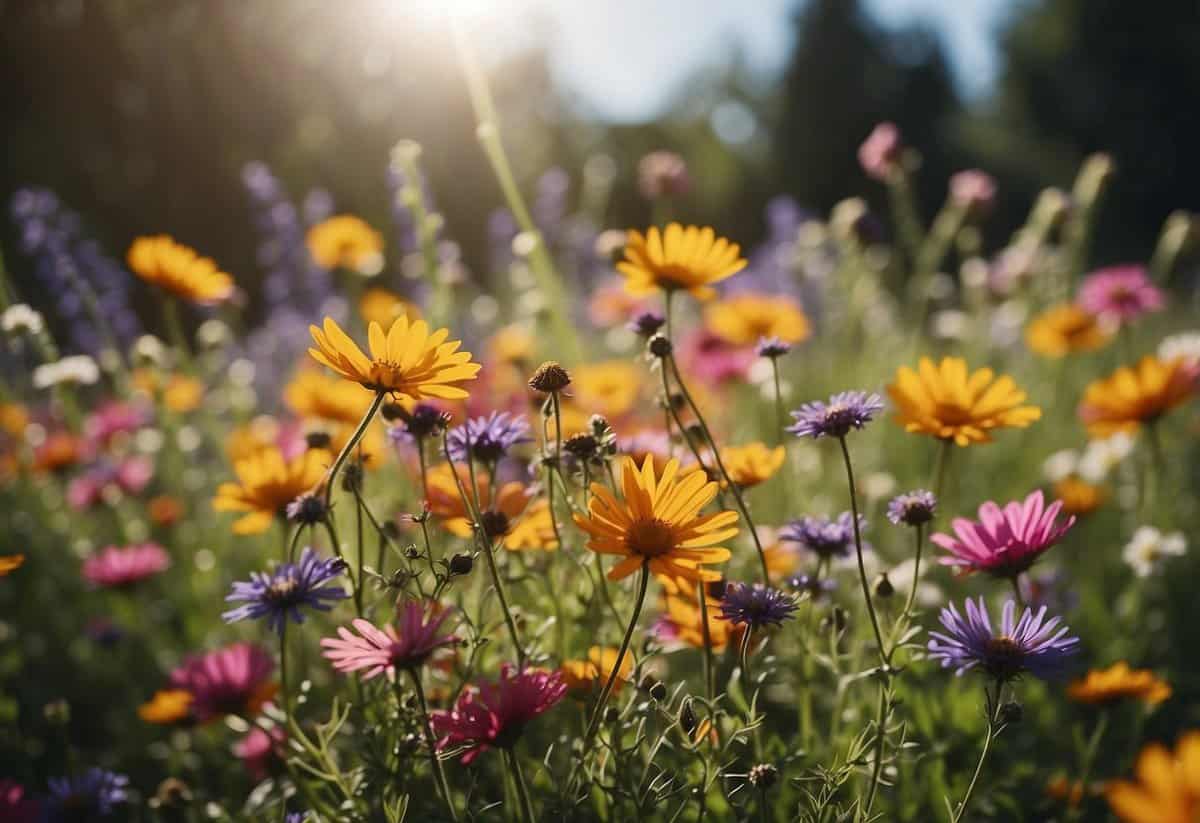
Creating a wildflowers mix in your garden adds vibrant color and attracts pollinators. Choose flowers like black-eyed Susan and butterfly weed, which are great for Massachusetts gardens. These flowers not only look beautiful but also help local wildlife.
Incorporate a variety of grasses and plant species to ensure year-round interest. Wild asters and verbena can add extra charm to your garden.
For a shady area, consider sweet William or shasta daisies. These plants thrive in less sunlight and still add a splash of color.
Explore more about different wildflower mixes at 15 Wildflower Garden Ideas.
6) Daisies and Sunflowers
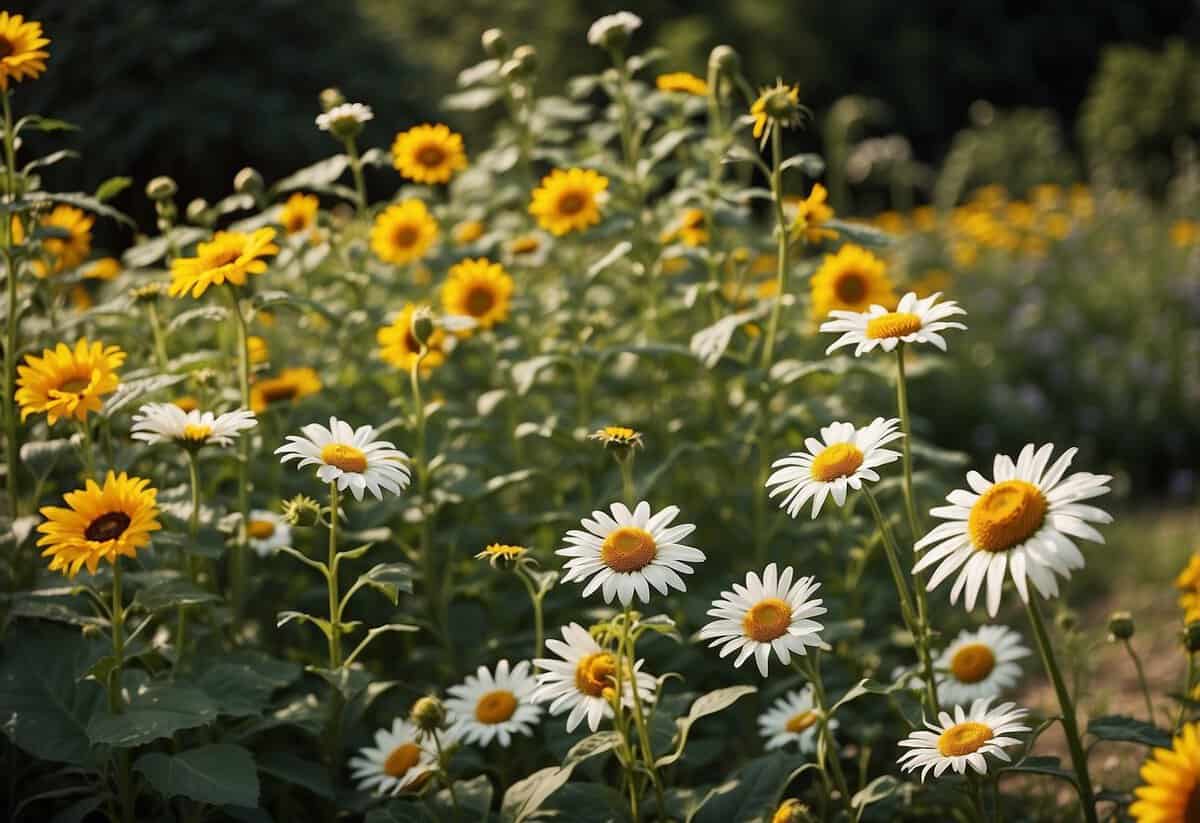
Adding daisies and sunflowers to your garden brings cheer and color. Daisies, like the popular Shasta Daisies, have white petals and a sunny yellow center.
Sunflowers thrive in full sun and well-drained soil. They grow tall and can create a stunning backdrop. For a smaller option, consider the false sunflower, which blooms all summer and handles Massachusetts’ weather well.
7) Tulip Rows
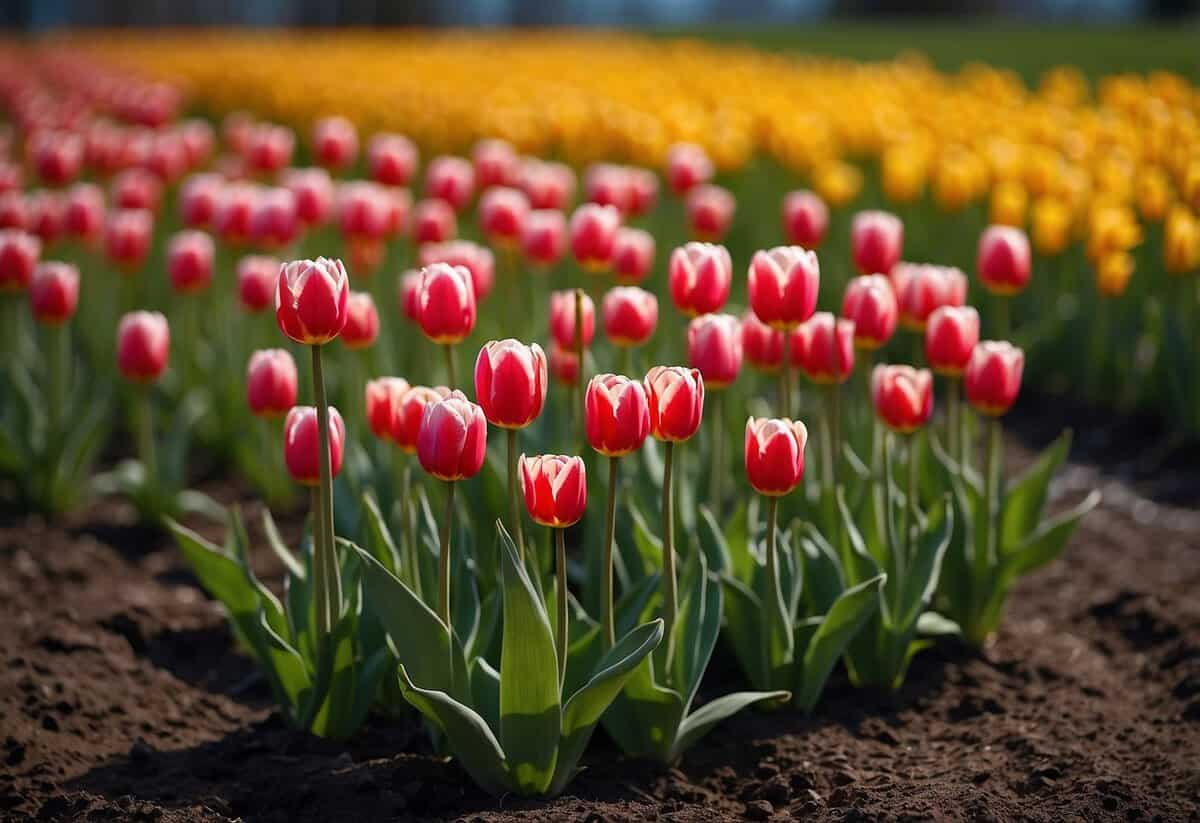
Creating rows of tulips can add a vibrant and orderly look to your garden. These flowers come in many colors, so you can mix and match to create stunning patterns.
Plant your tulip bulbs about 4-6 inches apart in well-drained soil. Make sure they get plenty of sunlight.
For a breathtaking view, consider planting them along your garden path or driveway. This creates a lively welcome to your home. For more ideas on tulip garden designs, visit 35 Tulip Garden Design Ideas.
8) Peony Corners

Adding peony corners to your garden can turn a simple yard into a beautiful space. Peonies, with their large, colorful blooms, are perfect for creating a striking focal point.
You can mix different varieties like herbaceous peonies and tree peonies to achieve stunning visual contrast. For more ideas, check out these peony garden design ideas.
Including peony corners in your garden can make it pop with vibrant colors such as red, pink, yellow, and white.
9) Lavender Borders

Lavender borders add a splash of color to your garden. The purple flowers stand out and create a lovely edge along pathways.
You can use lavender to line walkways or define garden beds. They pair well with other plants for a balanced look.
Lavender also attracts bees and butterflies, adding life to your garden. If you want to learn more, check out these ideas.
10) Vertical Gardens with Clematis
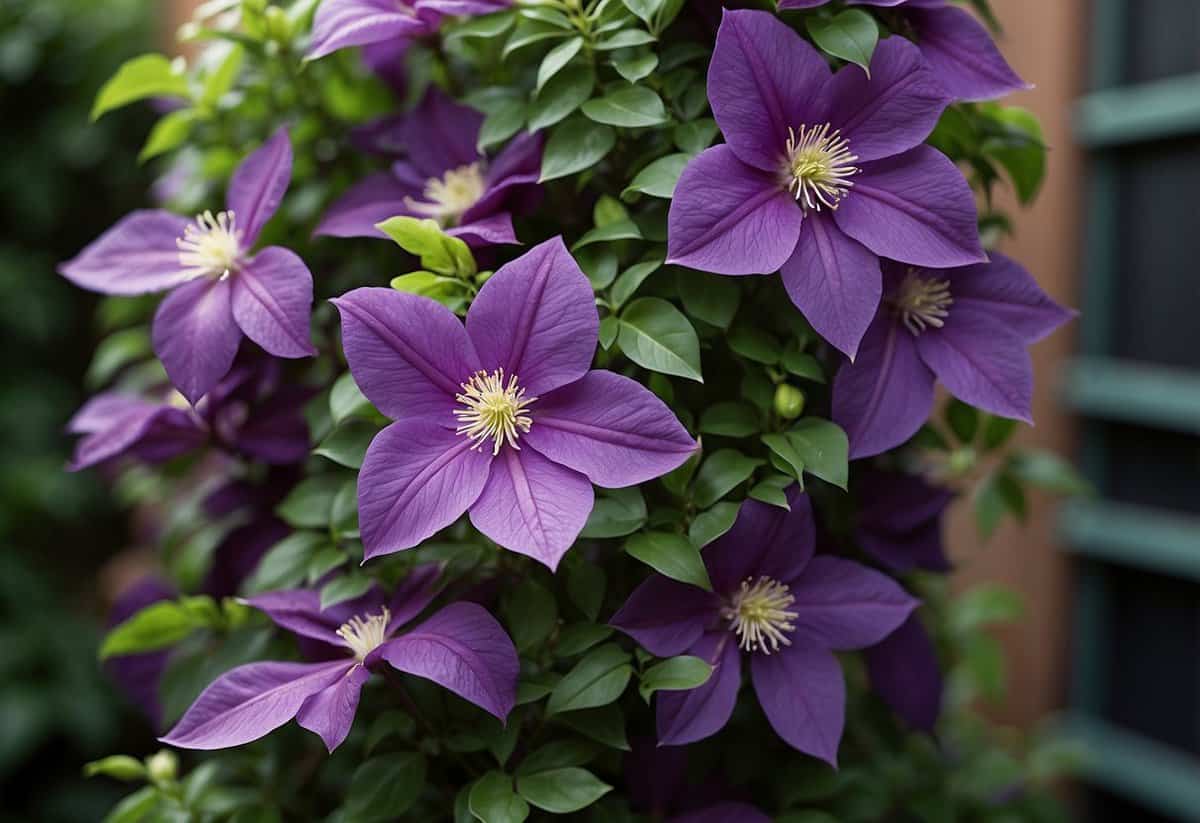
Adding clematis to your vertical garden can make your yard pop with color. These climbing flowers are perfect for creating a stunning visual effect.
You can use a trellis or a garden archway to support your clematis vines. Clematis grows well on sturdy structures, providing a beautiful, vertical display.
Consider mixing clematis with other flowers on a living wall. This combo ensures a lush and vibrant garden space.
Planning Your Flower Garden
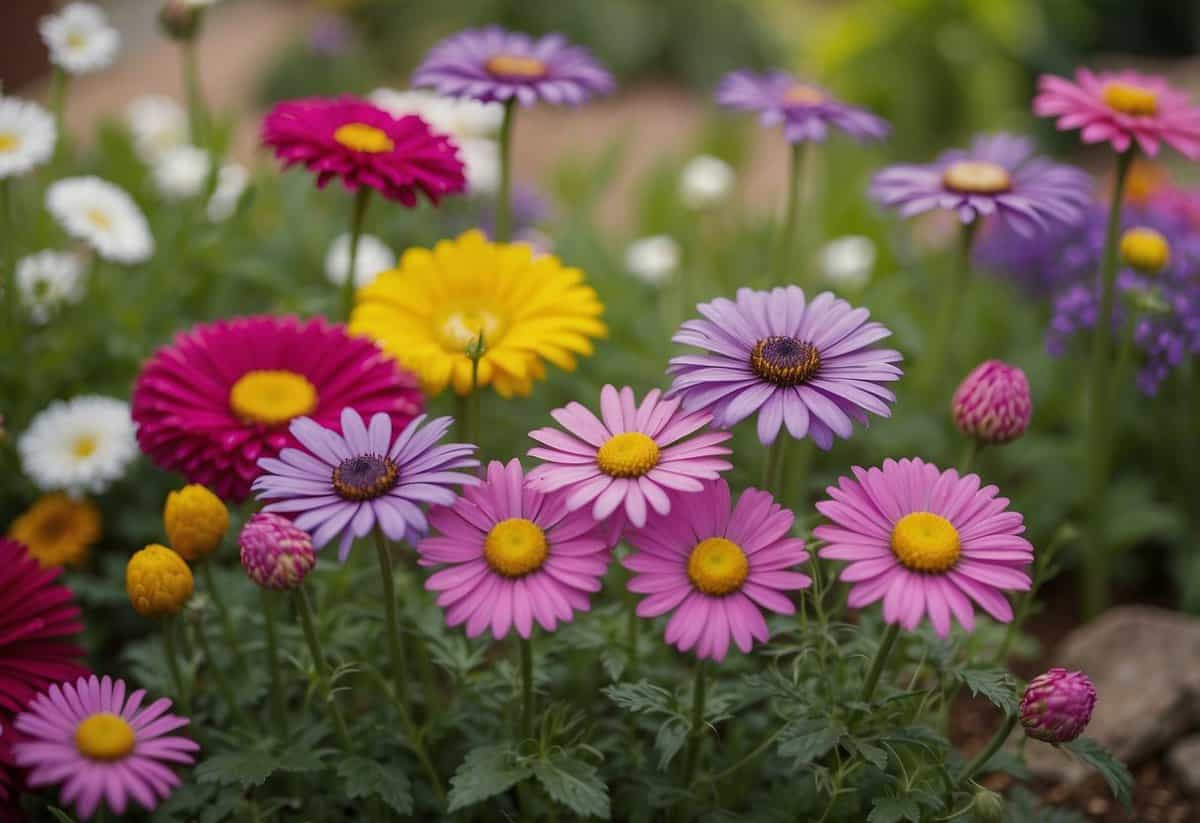
When planning your flower garden, the most important aspects are choosing the right location and preparing the soil properly. These two steps will ensure that your garden thrives and brings beauty to your space.
Choosing the Right Location
Selecting the perfect spot for your flower garden is key to its success. You need an area that gets at least six hours of sunlight per day. Most flowers require ample sunlight to grow and bloom well.
Avoid placing your garden in areas where water pools or drains poorly. Flowers need well-drained soil to prevent root rot. Ensure your garden is close to a water source, making it easier to keep your plants hydrated.
Consider how accessible the garden will be for maintenance tasks like weeding, pruning, and mowing. If you plan to mow around your garden, make sure the edges are smooth and easy to navigate.
Soil Preparation Tips
Healthy soil is essential for a successful flower garden. Start by testing your soil’s pH level. Most flowers prefer soil that is slightly acidic to neutral, around 6.0 to 7.0 on the pH scale. You can buy a soil testing kit at a garden center or send a sample to a lab.
Once you know your soil’s pH, amend it as needed. Add lime to raise the pH or sulfur to lower it. Adding organic matter like compost or aged manure improves soil structure and fertility.
Break up the soil to a depth of 12-18 inches to ensure good root growth. Remove any large rocks and debris. Regularly adding a 2-3 inch layer of mulch helps retain moisture and keeps weeds under control.
For more ideas on soil preparation and other garden design tips, check out Garden Design Ideas in Massachusetts.
Best Flowers for Massachusetts
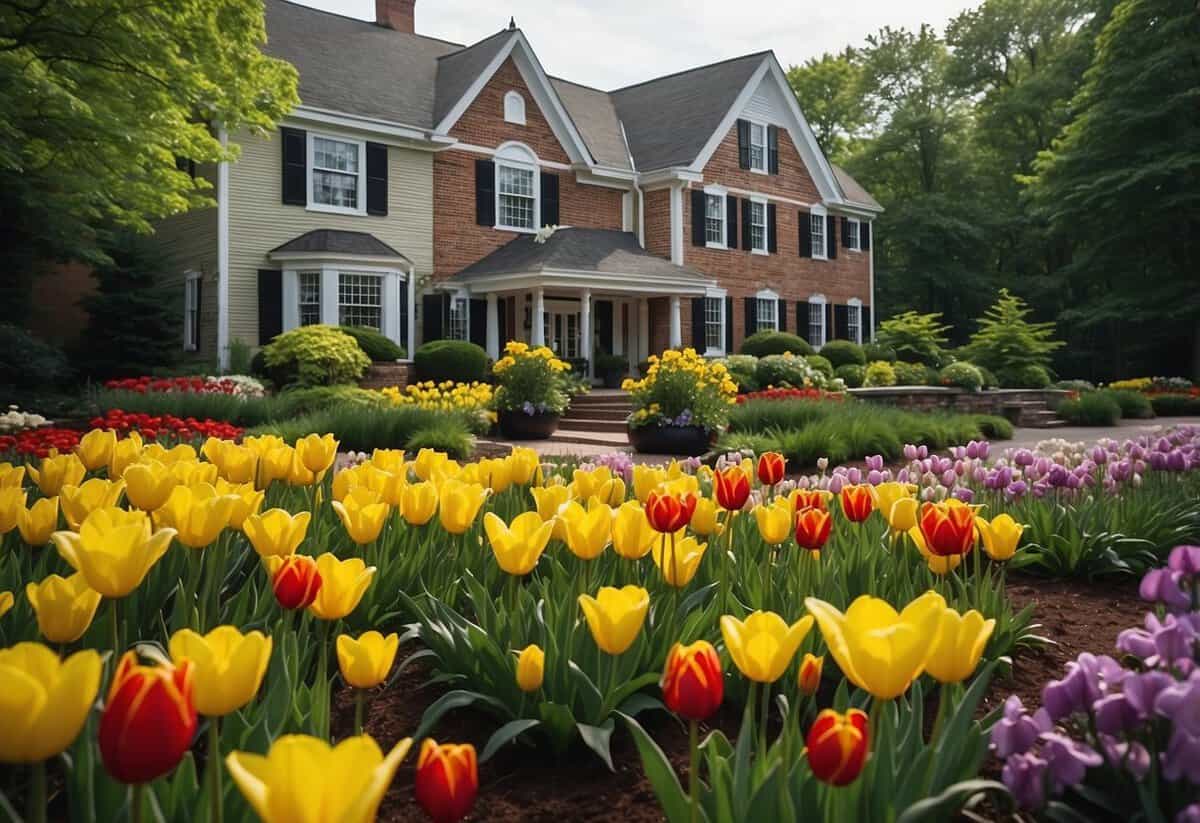
In Massachusetts, you can choose flowers that thrive in your local climate. You’ll find that both perennials and annuals can grow well here, as well as native flowers that are perfectly suited to the environment.
Perennials vs Annuals
Perennials are flowers that come back every year. They are a great choice if you want to avoid replanting each season. In Massachusetts, some top picks include daylilies and peonies. These provide beautiful blooms and are easy to care for.
Annuals need to be replanted every year but offer a vibrant burst of color for a single season. Popular annuals for Massachusetts include marigolds and geraniums. They grow quickly and can fill your garden with bright hues from spring to fall.
Choosing between perennials and annuals depends on how much time you want to spend gardening and what kind of look you want for your garden.
Native Flower Choices
Native flowers are adapted to the local climate and soil, making them low-maintenance choices. Some great native flowers for Massachusetts include the New England aster and black-eyed Susan. These flowers are not only beautiful but also support local wildlife like bees and butterflies.
The New England aster has purple flowers that bloom in late summer and fall. They add a splash of color when other plants are starting to fade. Black-eyed Susans have bright yellow petals and dark centers, blooming from midsummer to fall.
These native flowers grow well in Massachusetts because they can handle the local weather and don’t need much extra care. This makes gardening easier and more enjoyable for you.
Maintaining Your Flower Garden
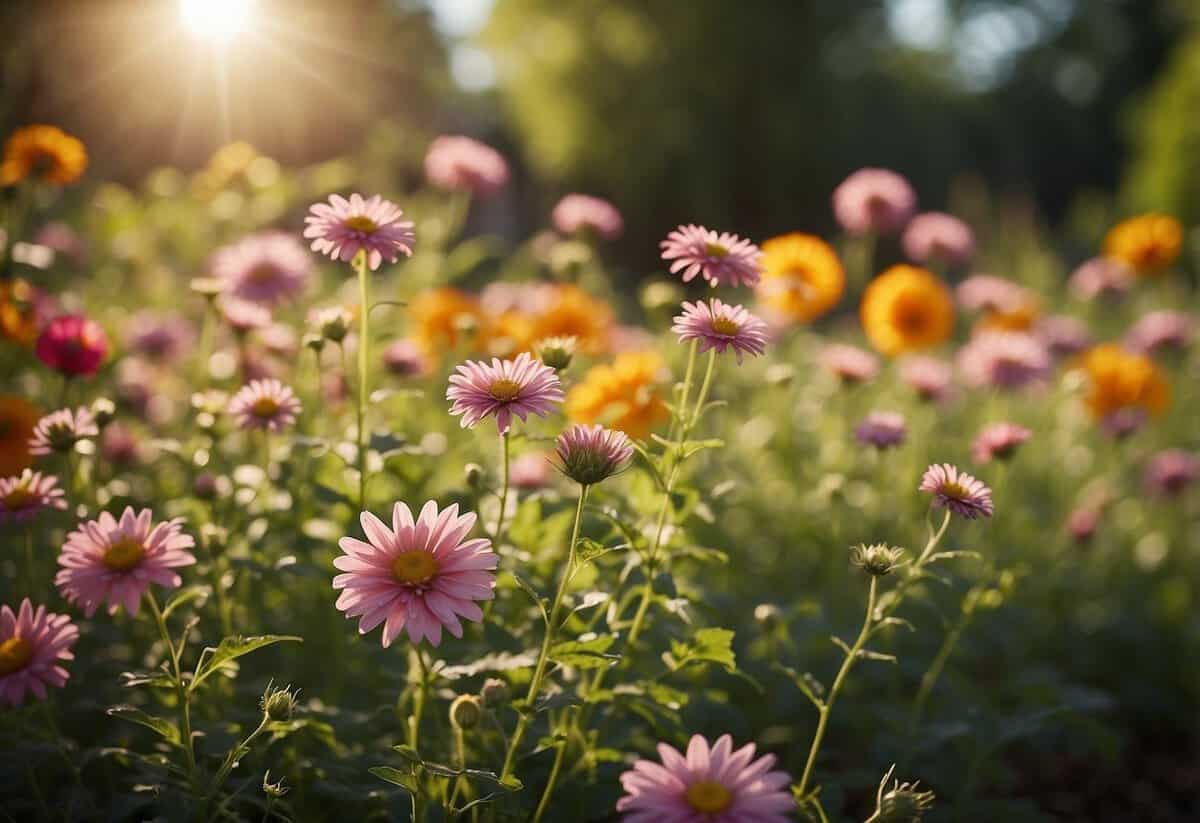
Maintaining a flower garden isn’t just about planting; it’s also about caring for what you grow. It’s important to water your plants correctly and keep pests away to ensure your garden flourishes.
Watering Techniques
Good watering techniques are crucial for maintaining a healthy garden. Gardens in Massachusetts often benefit from a mix of rain and manual watering.
Water your plants early in the morning or late in the evening. This helps reduce evaporation. Use drip irrigation or a soaker hose to deliver water directly to the roots. This type of watering is more efficient and doesn’t wet the leaves, reducing the risk of diseases. For best results, water your garden deeply but less frequently.
In especially dry periods, check the moisture level of the soil before watering. Stick your finger into the soil to see if it’s dry an inch below the surface. If it is, it’s time to water.
Pest Control Strategies
Keeping your flower garden free from pests is another essential part of maintenance. First, identify the common pests in your area, such as aphids, slugs, or Japanese beetles.
Encourage natural predators like ladybugs and birds to your garden. These can help keep pest populations down. Use insecticidal soap or neem oil for a more direct approach. These natural treatments won’t harm your plants but will deter pests.
Handpick larger pests like slugs or use barriers and traps. For example, copper tape can keep slugs away from your plants. Always monitor your garden regularly. Look under leaves and inspect stems for signs of pest activity. This lets you address problems before they become severe.
Maintaining your flower garden takes some effort, but with the right techniques, your garden will thrive.







